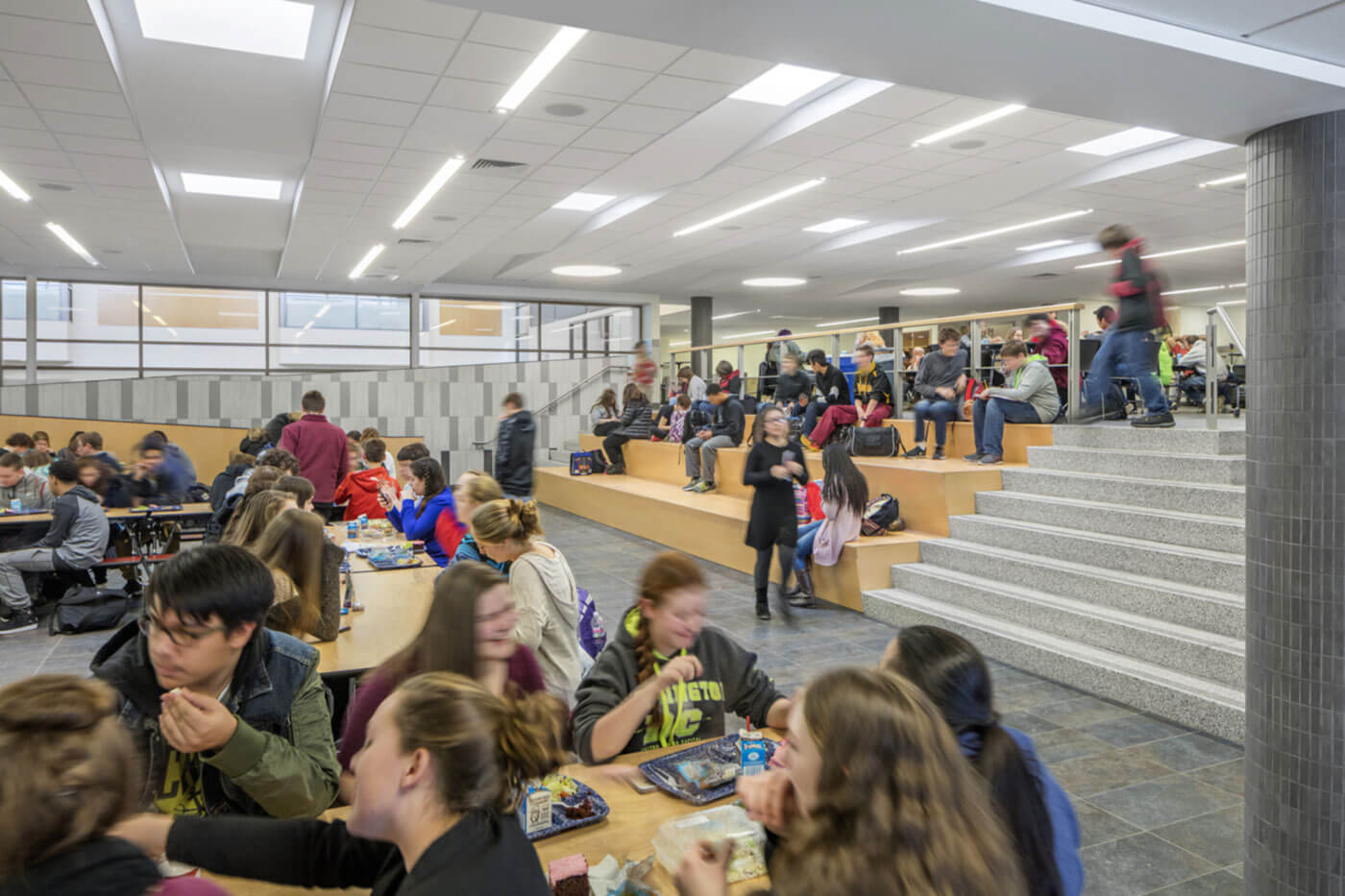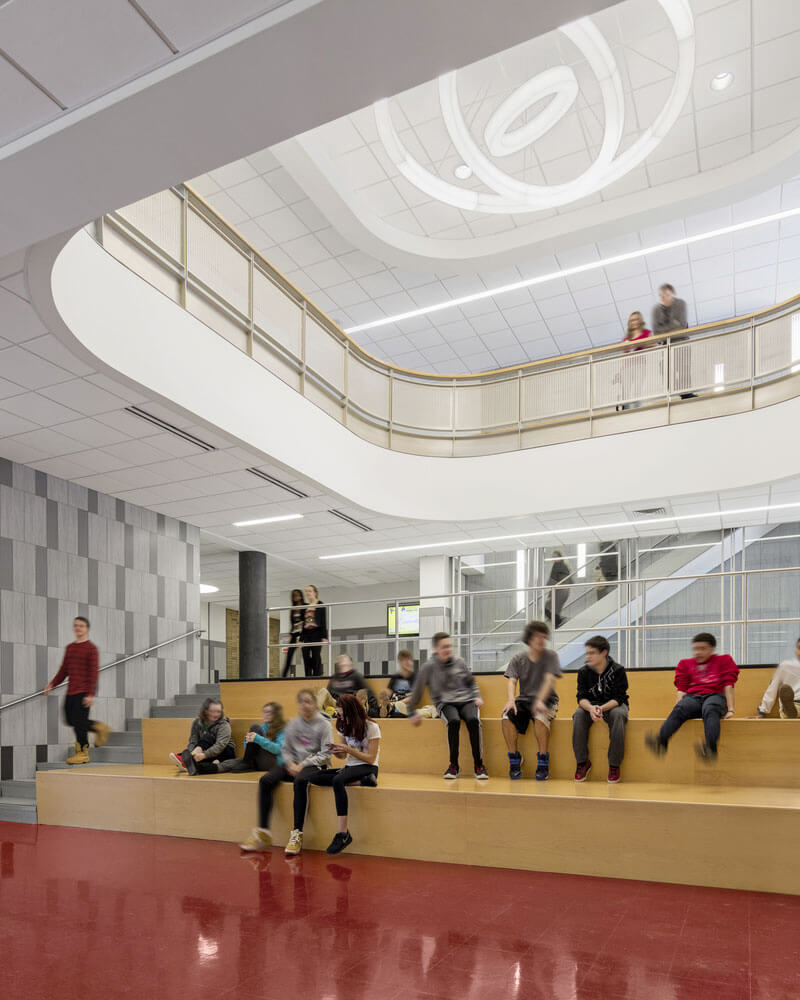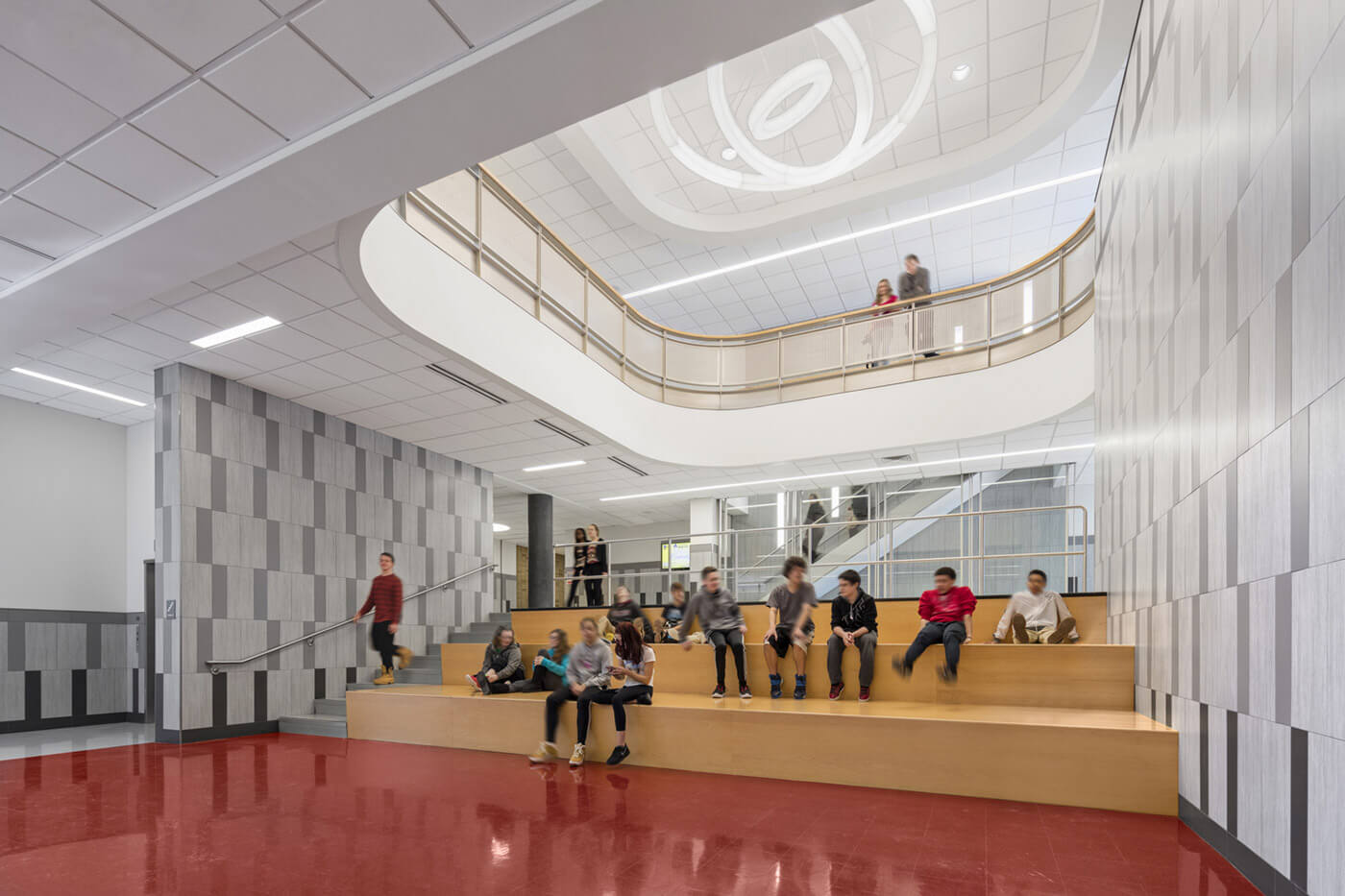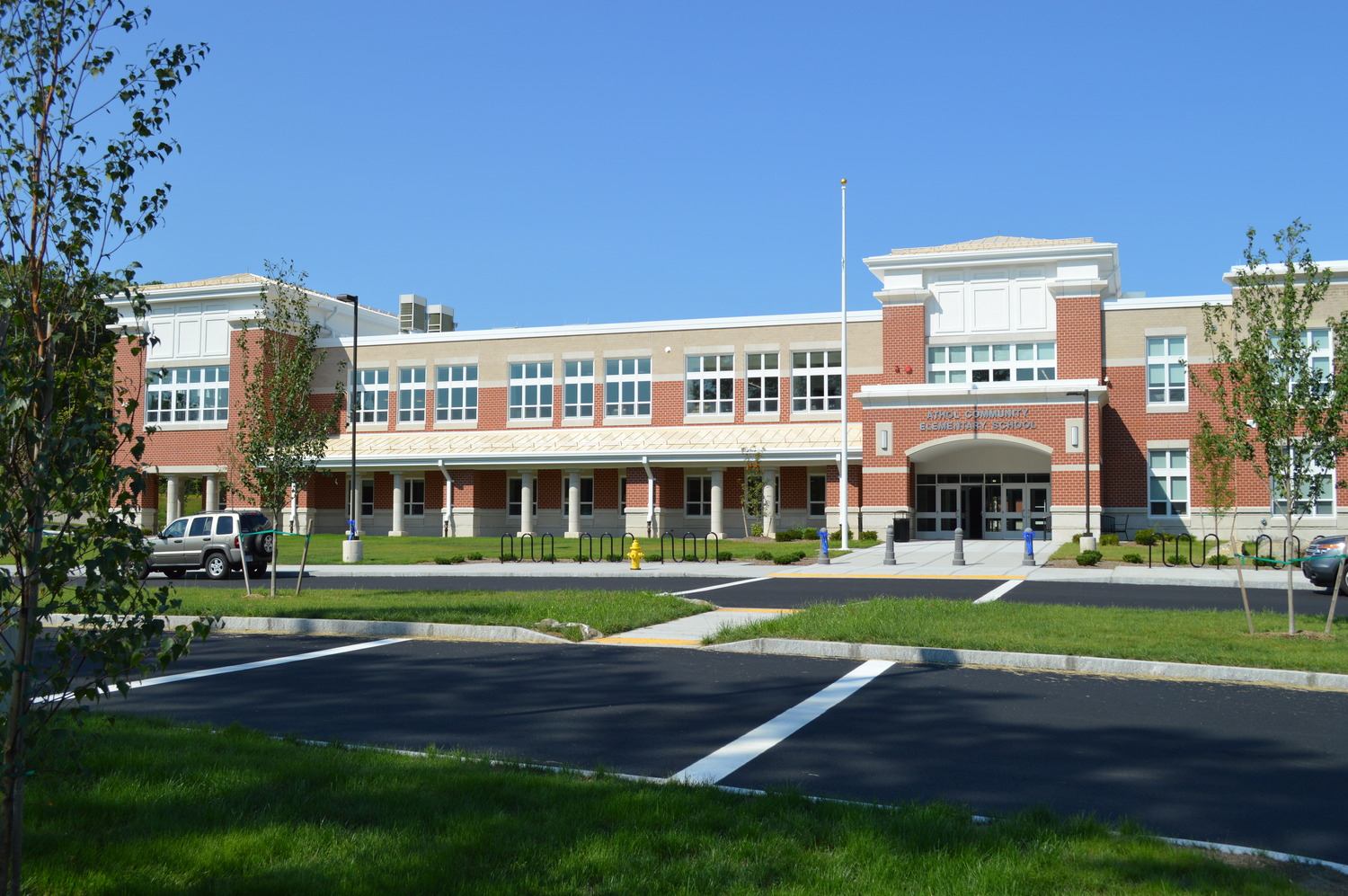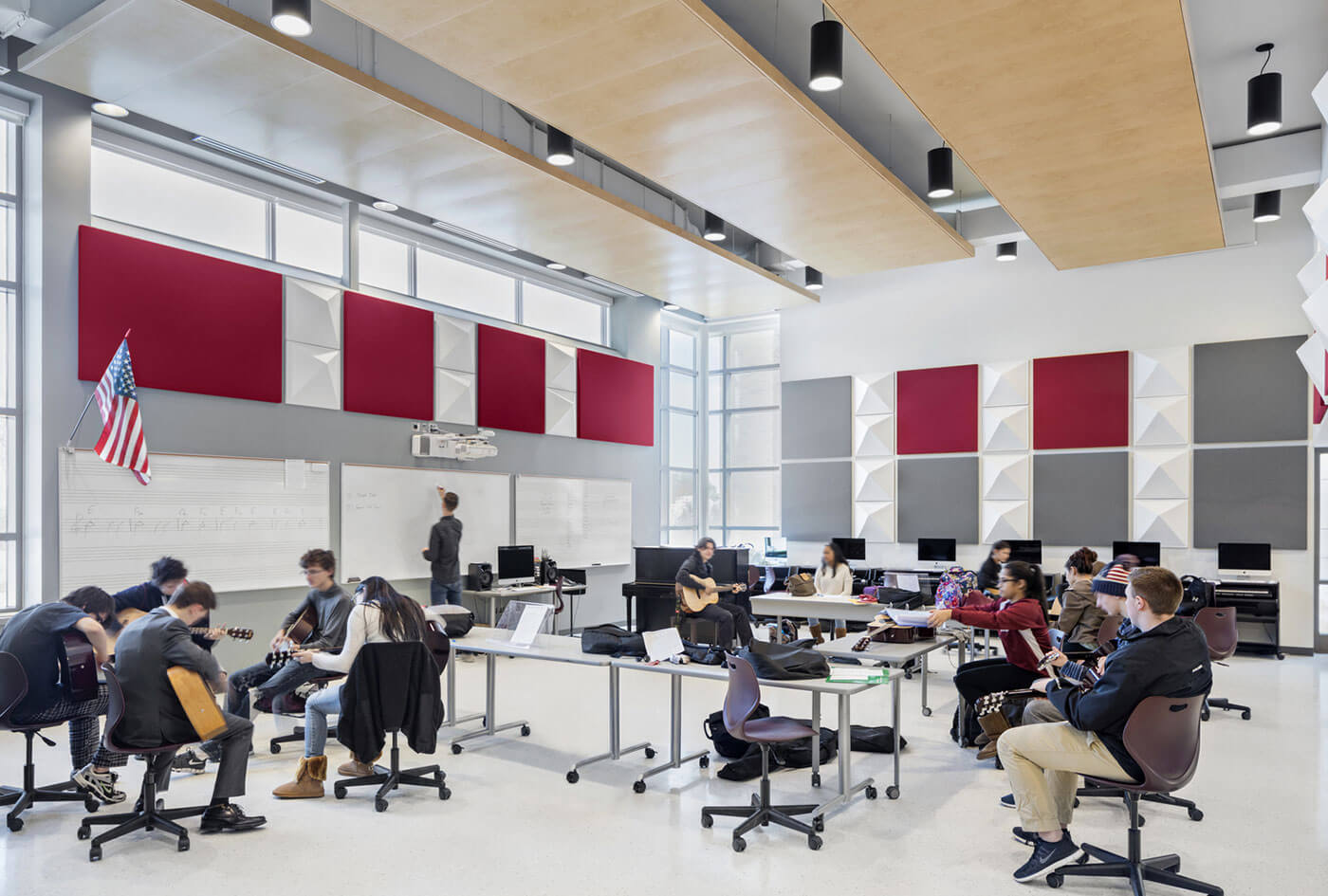
“How can we remake a school from a bygone era to inspire teachers, engage students, and embrace the two communities?”
The Massachusetts School Building Authority (MSBA) had initially prescribed a combined middle and high school to increase its total population. SMMA convinced the communities to rethink this logic by thoroughly analyzing the physical attributes of the building, and then conducting a master plan of the District’s entire portfolio of schools. The final solution took the original 1960 building, which housed over 1,000 students, and converted it into a new high school designed for only 495 students.
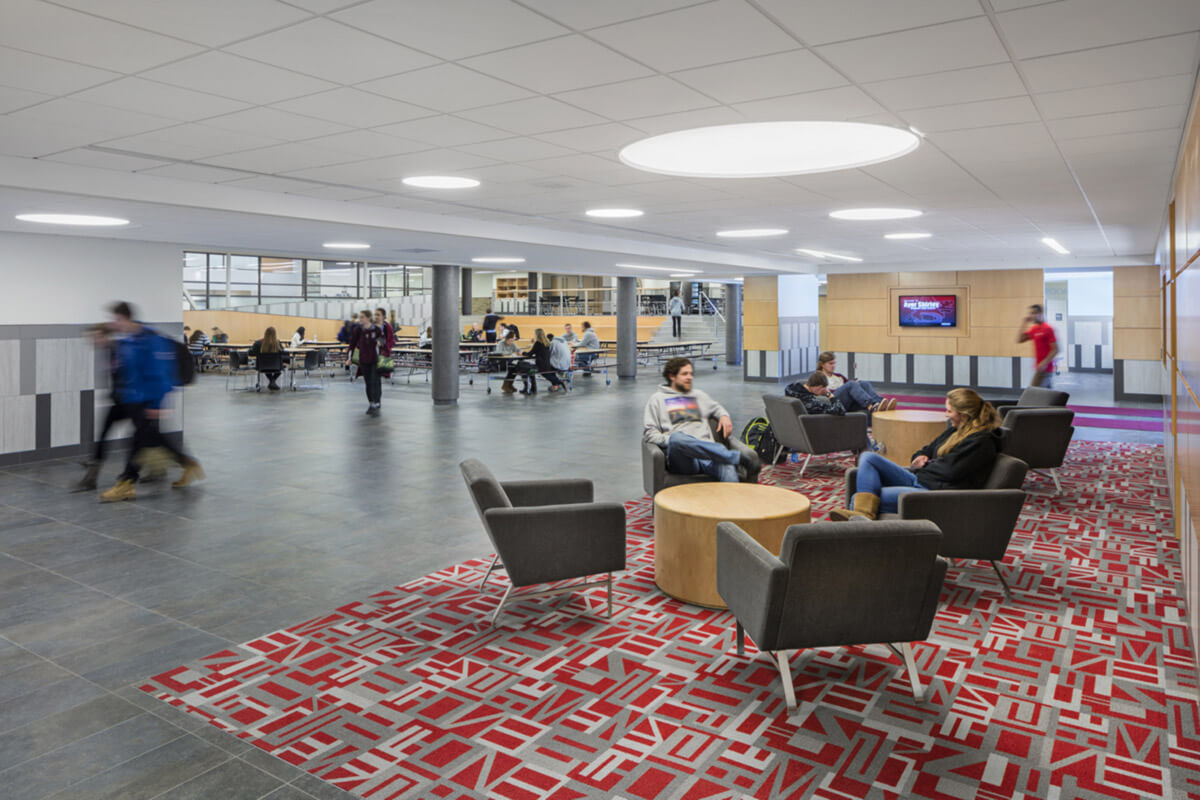
The design infills the existing courtyard to create a centralized learning commons.
This new gathering space is directly connected to the arts and technology disciplines on one side, while still joined with the school’s commons cafeteria on the other.
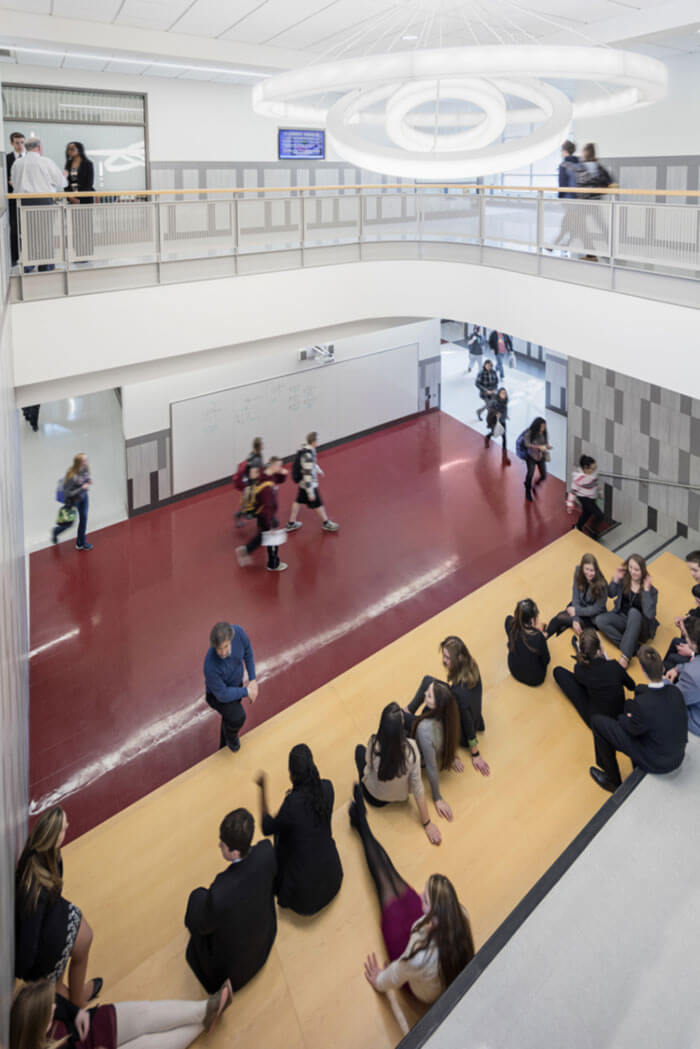

The high school’s new structure establishes open and free-flowing corridors throughout, enabling access to all major facilities such as a large gymnasium, auditorium, media center, and TV studio.
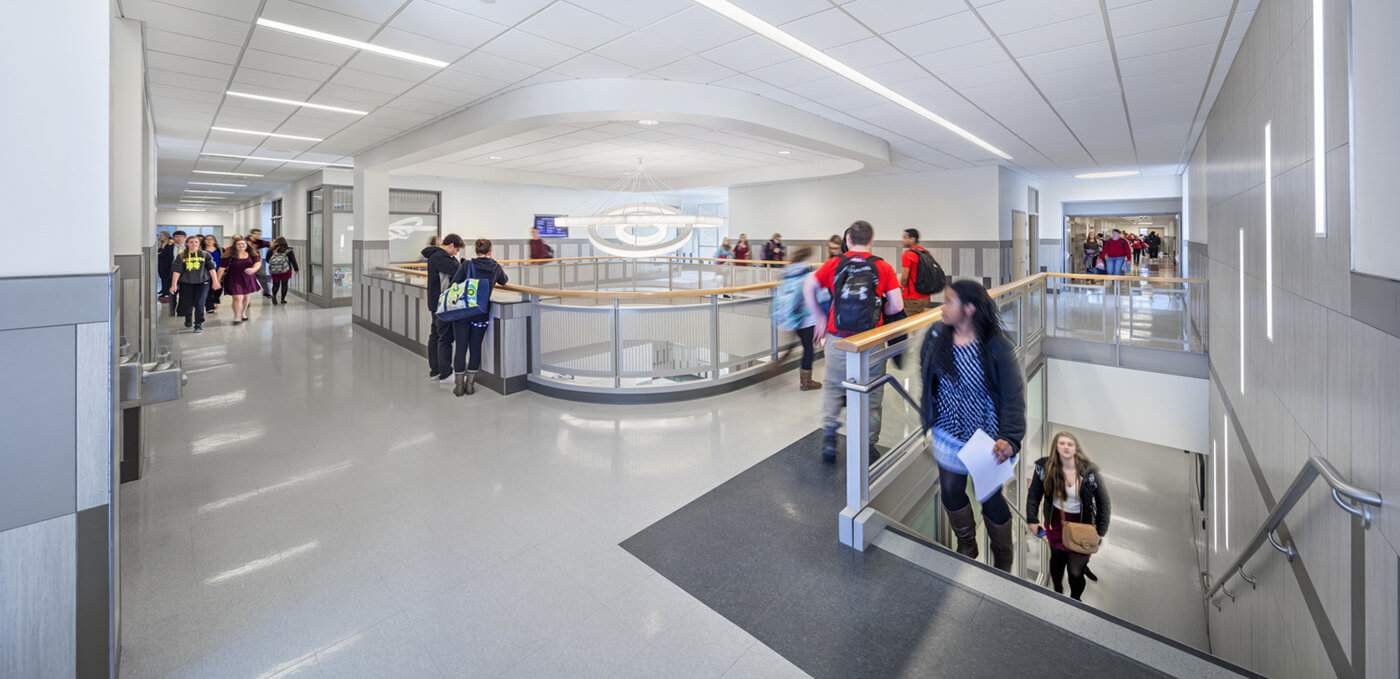
Treating the site as a campus formed pathways and connections between all grade levels.
Understanding the building’s physical attributes and their potential impacts on learning was key in supporting modern educational delivery. The comprehensive solution saved the state and communities over $20 million.

The new layout maximizes student-teacher interactions.
The design blends previously separated departments, such as its STEAM, the arts, and humanities classrooms. It incorporates a variety of spaces such as teacher planning centers, small group rooms, two types of large classrooms, and mobile furniture systems.
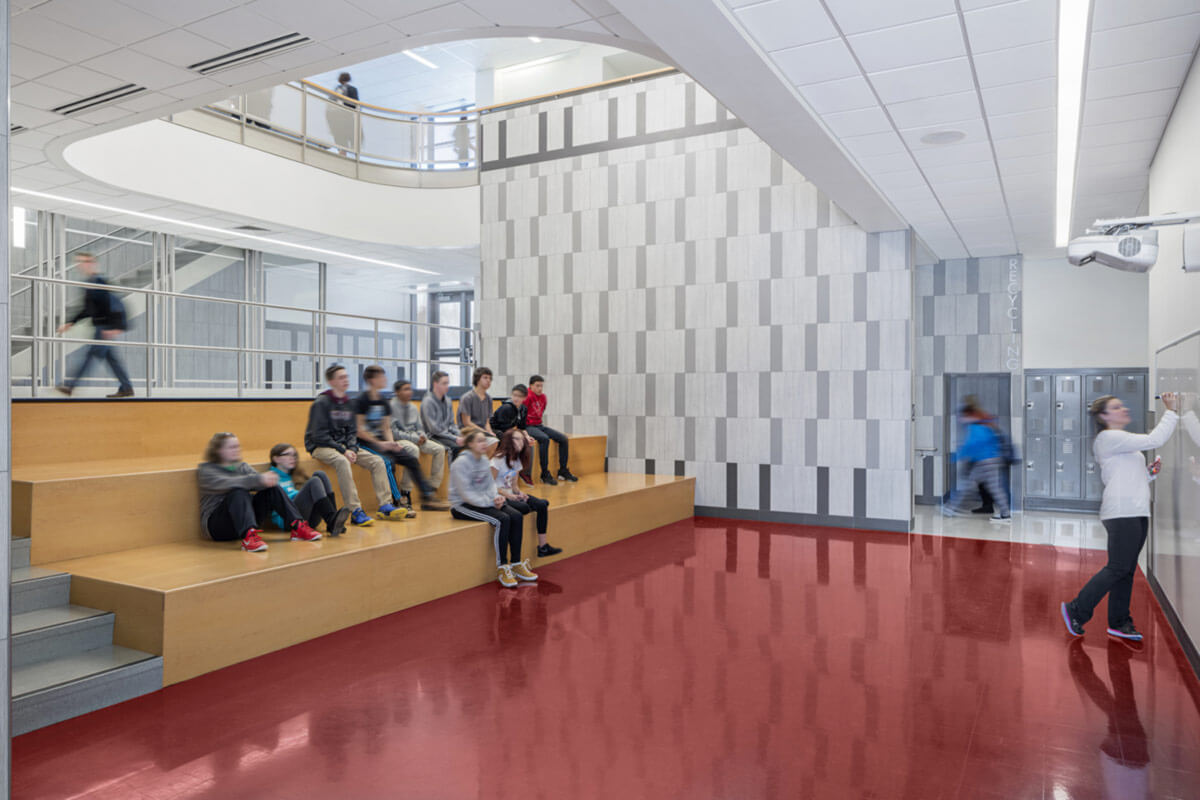
Corridor and commons amphitheater-style spaces prompt student socialization and foster the concept of learning anywhere, anytime. The refreshed program places integration and collaboration at the forefront of the school’s daily curriculum.
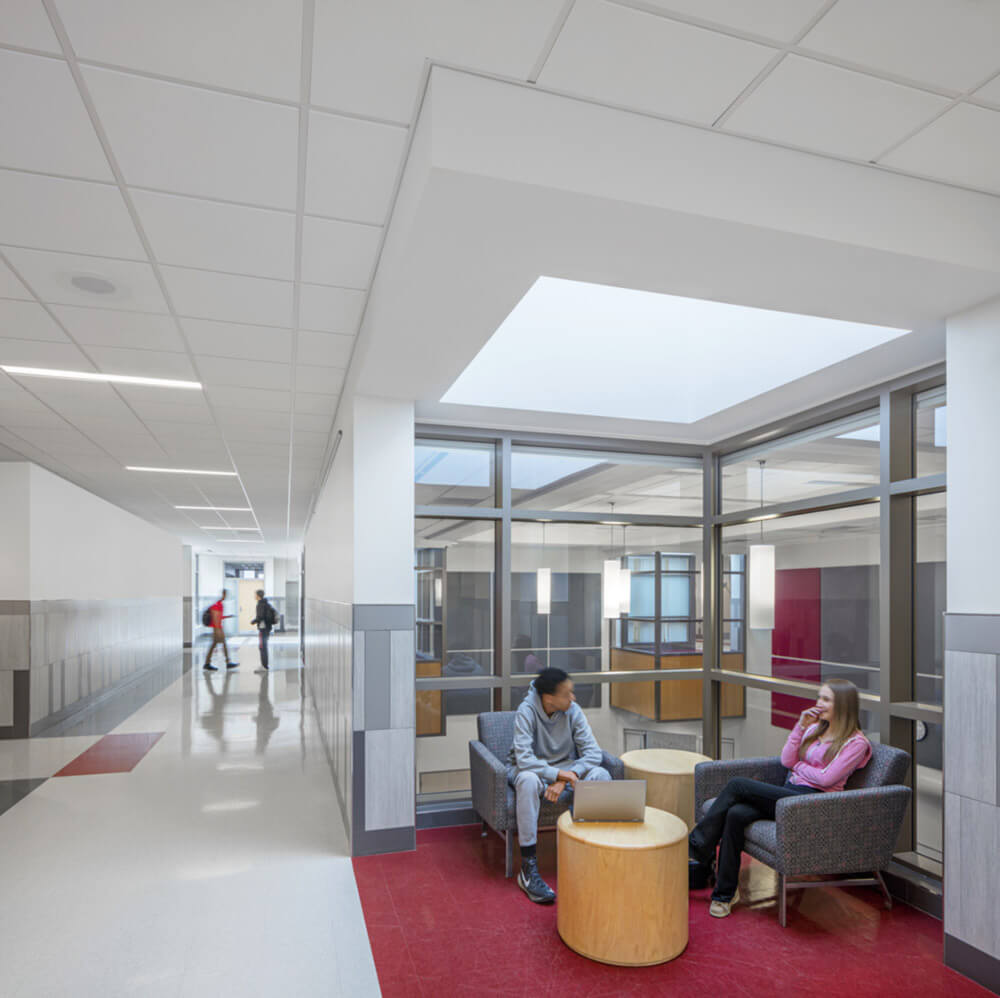
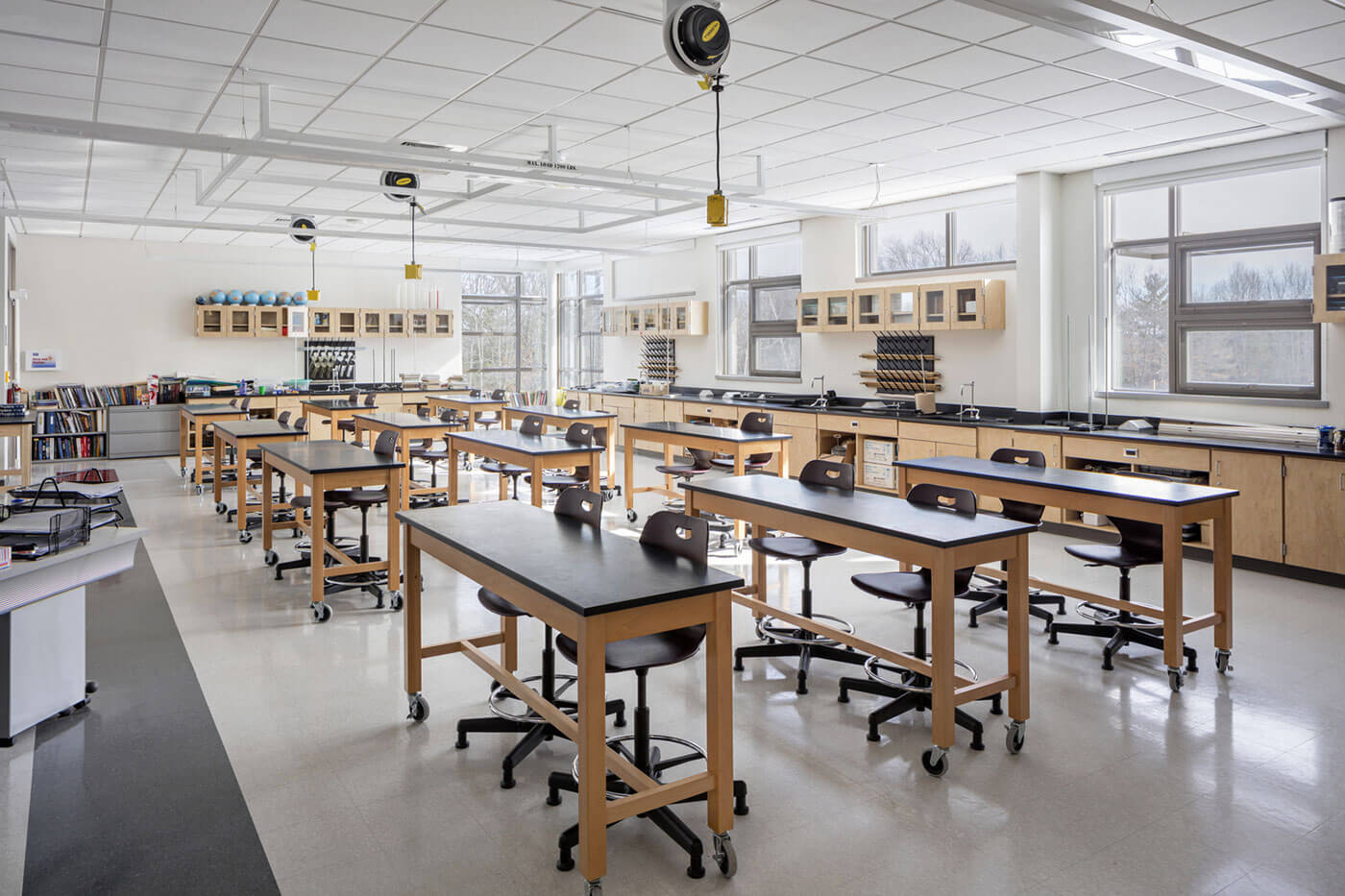
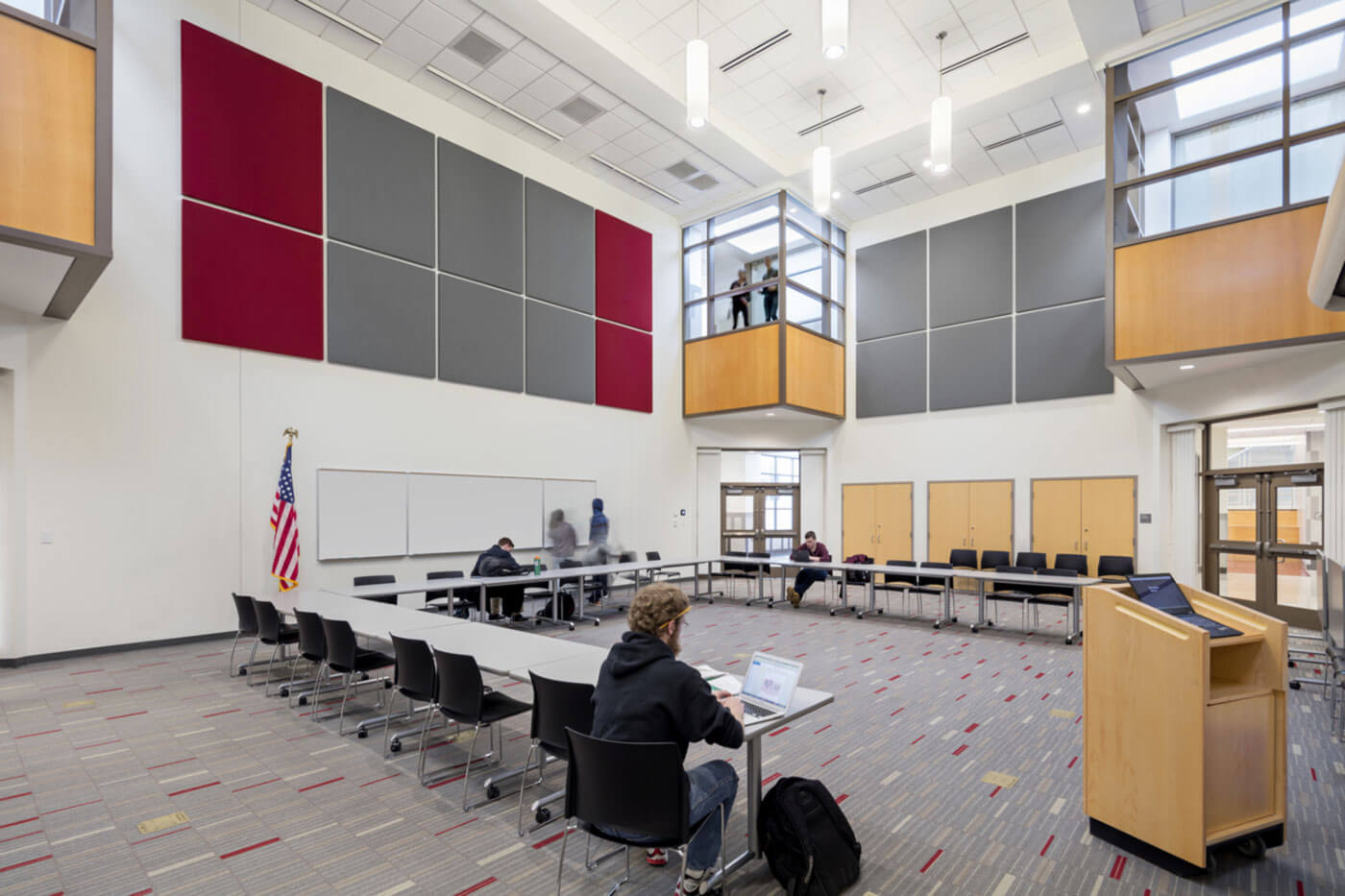

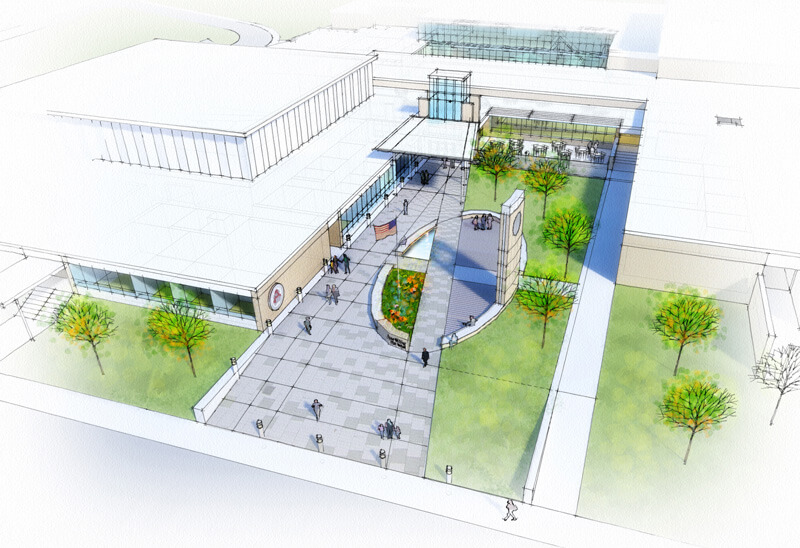
Ayer-Shirley’s main entrance, formerly a loading dock and service court, now faces a redesigned parking lot. The new entryway establishes a celebratory plaza complete with a canopy and outdoor learning and dining spaces. Additionally, a sculpture court allows for students to express themselves artistically.
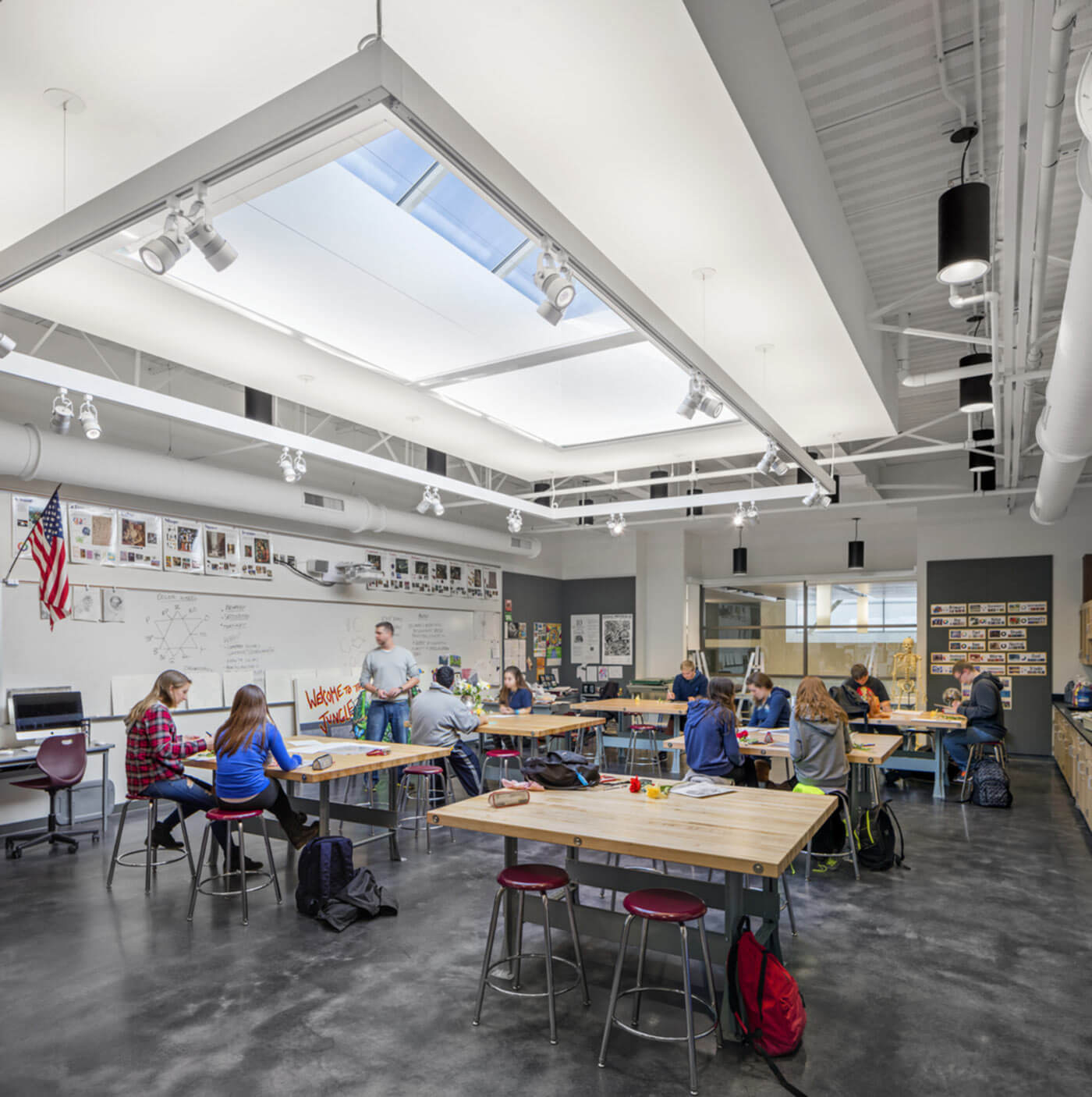
The building’s materials help bring the outside in through lightweight metal panels and new fenestration.
Skylights provide natural daylighting at strategic points throughout the building, including the second-floor art rooms overlooking the learning commons.
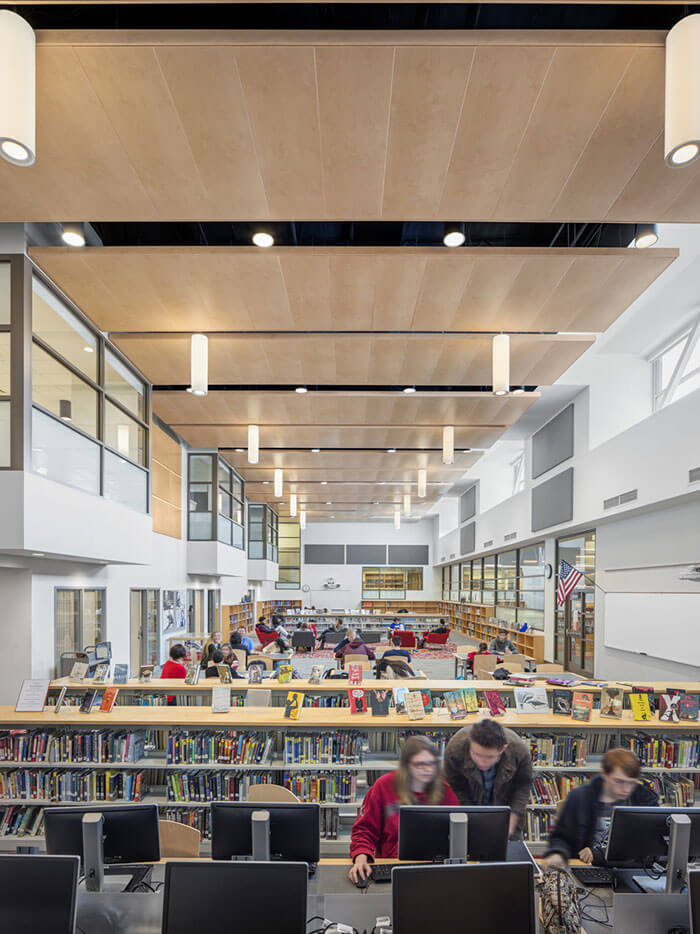
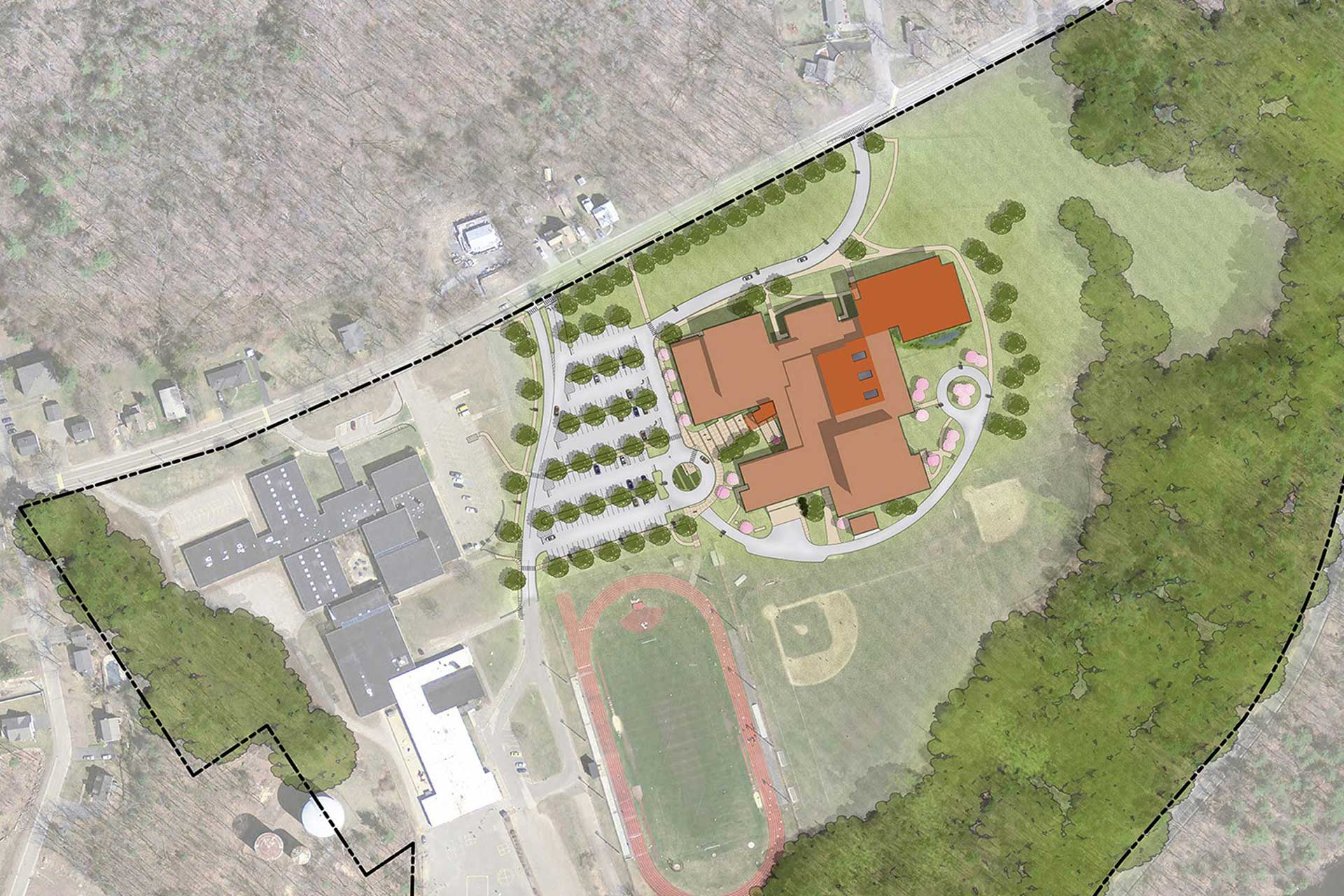
The phasing of the new high school was complex and challenging.
The school remained operational while different areas were demolished and renovated. For the HVAC systems, a close-knit and innovative system of ductwork was developed in collaboration among SMMA architects and engineers using BIM technology.
This integrated design team overcame an extremely complex structural and climate control system, ultimately arriving at a scheme in which end-user comfort is balanced with efficient energy conservation.
